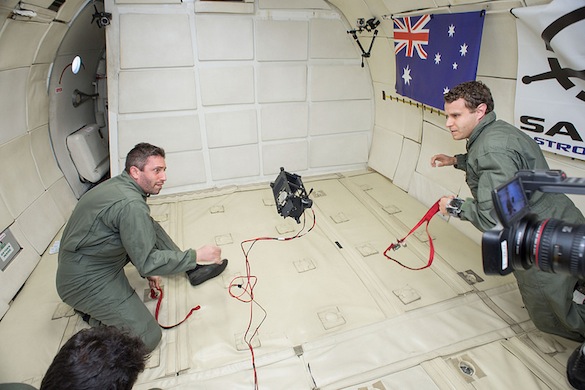Testing the Deployment and Rollout of the Deployable for Recovery through Atmospheric Gravity Entry (DragEN) Electrodynamic Tether for CubeSats
PI: Jason Held, Saber Astronautics Australia Pty. Ltd.
PI: Jason Held, Saber Astronautics Australia Pty. Ltd.

- TA02 In-Space Propulsion Technologies
- TA03 Space Power & energy Storage
The number of pico satellites launches is expected to double over the next decade. These small satellites, while cheap, have low maneuverability and experience very high failure rates (up to 50% for CubeSats). There is a corresponding increase in attention to space junk, with greater liability placed on the satellite operator if their defective spacecraft poses a hazard to more expensive satellites. As pico satellites leave the realm of academia and gain more commercial momentum, the need for reliable de-orbit technology becomes acute.
The simple, yo-yo design is intended to ensure a smooth deployment of approximately 200-meters of tether. This is significant because many previous tether experiments failed due to incomplete rollout, snags on the tether line due to uncontrolled dynamics.
Since the problem of space junk is a global issue, a reliably working tether deployer is just as important to NASA as it is for any other major spaceflight program.
The key objectives are to validate various phases of operation. Phases include Deployment, Rollout, and Deceleration:
Deployment phase: Deployment will be measured visually using a static video camera and ruler background to track the motion variances within the first 5-meters of deployment. Tests will demonstrate that release and deployment of the DragEN occurs consistently when commanded and without undue dynamics of the deployment mechanism.
Rollout phase:Post deployment tests will validate that the rollout of the tether is consistently smooth and does not snag, break, or sway.
Deceleration phase:Breaking tests will measure the deceleration rate for space rated epoxies in the final phase of rollout. We will also assess and mitigate any physical risks occurring from press fitted and moving components.

Technology Details
-
Selection DateAFO6 (Jun 2013)
-
Program StatusCompleted
- 2 Parabolic
Development Team
-
PIJason Held
-
Organization
-
SponsorSaber Astronautics Australia Pty. Ltd.
-
More Information

